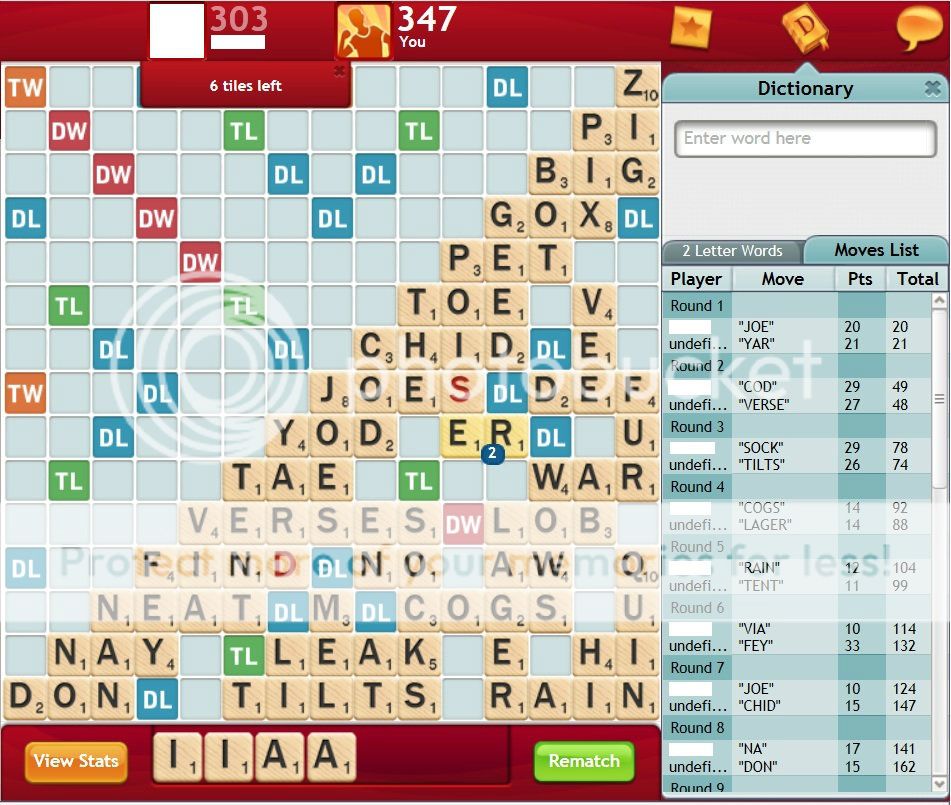Scrabble Tutorial: Strategies - The Staircase
Introduction
To use the strategy that results in a nice staircase formation, you will first need a very strong memory of common and uncommon 2-letter words, 3-letter words, and sometimes even 4-letter words. This is where you and the opponent place tiles (that are often offset by 1) above/below each other, resulting in a game of "whoever gets to the triple-word bonus tile is a winner". This type of play often results in the 2-pass ending, where both players cannot find a place to put tiles, and pass as a result of that (See below).

This is also a good example of "who can block the best and force the other player to make a bad move". If either one of you get (forced) into the corner, the other gets the triple-word tile.
Scoring
Players can average ~20pts per move. Play is manipulative, so a player controlling the game could score much higher than the one being controlled. Bingos are rare and valuable. A bingo is a huge game changer as it adds an extra 50 to score and opens up a ton of possible moves.
Shape
The board will start off with a diagonal stretching to the opposite corners of the board. After this, you may see the following possibilities:
- A second diagonal: Pieces will be more spread out
- Half a board: After the diagonal reaches the corners of the board, the ends will collapse inwards, and play will fill in the spaces between, so that after the game, only half the board would be filled. The other half of the board would be blank (depends).
How to Avoid it
To counter this strategy, use hooks. Front-hooks and back-hooks can get you out of there very quickly because they open up so many possible moves that there is no way that the opponent could block them all in time or effectively. I personally like playing in open spaces, so I try to open up a lot of the time when I see the staircase forming, even when the opponent gains more (usually temporarily). This helps me as I can then find more places to put my bingos.